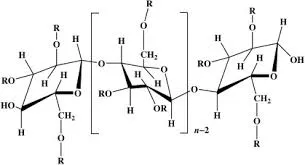
nov. . 05, 2024 10:46 Back to list
hydroxypropyl methylcellulose use
The Versatility and Applications of Hydroxypropyl Methylcellulose
Hydroxypropyl methylcellulose (HPMC) is a cellulose derivative that is widely recognized for its versatility and usefulness across various industries, including pharmaceuticals, food, cosmetics, and construction. This non-ionic, water-soluble polymer, derived from natural cellulose, has gained significant attention due to its unique properties, such as film-forming ability, thickening, and emulsifying characteristics. This article explores the applications and benefits of hydroxypropyl methylcellulose in different sectors.
Pharmaceutical Applications
In the pharmaceutical industry, HPMC plays a crucial role as a binder, film-former, and controlled-release agent in various dosage forms, including tablets and capsules. Its ability to form gels and films is invaluable in creating pharmaceutical formulations that require sustained drug release. HPMC can modify the viscosity of solutions, providing a controlled release profile, which enhances the therapeutic efficacy of drugs. Moreover, its compatibility with a wide range of active pharmaceutical ingredients makes it an ideal excipient for various formulations. This versatility allows HPMC to be used in both immediate release and extended-release formulations, improving patient compliance and drug effectiveness.
Food Industry Uses
In the food industry, hydroxypropyl methylcellulose is employed as a food additive, designated as E464. Its functionalities extend to acting as a thickener, stabilizer, and emulsifier. HPMC is often used in gluten-free products to improve texture and moisture retention, mimicking the properties typically provided by gluten. For instance, in baked goods, HPMC helps maintain softness and extend shelf life by trapping moisture. Additionally, it is used in sauces, dressings, and dairy products to enhance viscosity and create a desirable mouthfeel. Because HPMC is derived from natural cellulose, it is considered safe for consumption and is favored in clean-label products, aligning with consumer demand for healthier options.
Cosmetic and Personal Care
hydroxypropyl methylcellulose use

The cosmetic and personal care industry also benefits significantly from the properties of hydroxypropyl methylcellulose. It serves as a thickener and stabilizer in numerous formulations, such as lotions, creams, gels, and shampoos. HPMC imparts a smooth texture and improves the spreadability of products, enhancing user experience. Its film-forming capability allows for the creation of long-lasting formulations, such as hair gels and styling products, where a firm hold is required.
The use of HPMC in cosmetics is particularly valuable due to its non-toxic and hypoallergenic characteristics, making it suitable for sensitive skin products. Its natural origins align well with the growing trend towards environmentally friendly and sustainable beauty products.
Construction Industry Contributions
In the construction industry, hydroxypropyl methylcellulose is used as a thickening agent in various materials, such as adhesives, mortars, and paints. Its water retention capabilities are crucial for ensuring proper workability and adhesion of cement-based products. HPMC improves the consistency and spreadability of mortar and render, enhancing their performance during application. It also helps reduce the risk of cracking and enhances the durability of the final product by allowing for better hydration of cement.
Furthermore, its antifreeze and water-retention properties make HPMC beneficial for use in low-temperature conditions, improving the efficacy of construction materials during colder months. It ensures that the materials set properly, achieving optimal strength and performance.
Conclusion
Hydroxypropyl methylcellulose is a remarkable compound that showcases significant versatility across multiple industries. Its applications in pharmaceuticals, food production, cosmetics, and construction underline its functional importance and adaptability. As industries continue to evolve and consumer demands shift toward more natural and efficient products, the role of HPMC is likely to expand further, ensuring its continued relevance and utility in modern applications. Whether improving drug formulations, enhancing food textures, or contributing to sustainable construction practices, hydroxypropyl methylcellulose remains an essential ingredient in the advancement of various sectors.
-
Versatile Hpmc Uses in Different Industries
NewsJun.19,2025
-
Redispersible Powder's Role in Enhancing Durability of Construction Products
NewsJun.19,2025
-
Hydroxyethyl Cellulose Applications Driving Green Industrial Processes
NewsJun.19,2025
-
Exploring Different Redispersible Polymer Powder
NewsJun.19,2025
-
Choosing the Right Mortar Bonding Agent
NewsJun.19,2025
-
Applications and Significance of China Hpmc in Modern Industries
NewsJun.19,2025







